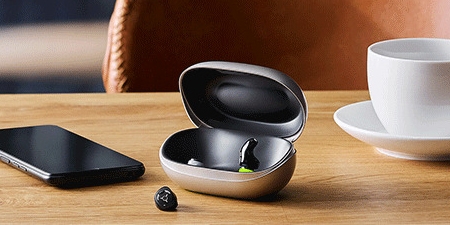Learn: Why Has My Hearing Aid Stopped Working?

Learn: Why Has My Hearing Aid Stopped Working?
8 min
Published January 3, 2025
Why Has My Hearing Aid Stopped Working?
If you've noticed your hearing aids aren't performing as they should, there are a few things you can troubleshoot at home before visiting a hearing aid clinic for professional help. Hearing aids are essential devices that significantly enhance your quality of life, so when they malfunction, it's natural to want to identify and address the issue quickly. Familiarizing yourself with the common reasons why your hearing aid might stop working and basic troubleshooting tips to get them back in action can help you solve some issues at home on your own.
Dead Batteries
Hearing aids rely on batteries for power. If your hearing aid suddenly stops working, the first thing to check is the battery. Most modern hearing aids are equipped with rechargeable batteries, so plugging them into their charger might solve the issue. Even if charging them doesn't correct the problem, they might need the rechargeable batteries replaced. A hearing aid specialist can help with that option. If your devices still use disposable batteries, try replacing them. Regularly monitoring battery levels and charging them at night while sleeping can prevent unexpected disruptions.
Earwax Buildup
Earwax is a natural substance produced by your ears to keep them clean, but it can cause problems if it clogs the microphone or receiver of your hearing aid. When this happens, it can result in muffled or distorted sound or even complete failure. Regular cleaning and maintenance of your hearing aids can help avoid this issue. Hearing aid stores offer cleaning kits that include various tools to reach the different parts and clean them safely.
Moisture Damage
Exposure to moisture, whether from sweat, humidity, or accidental splashes, can lead to corrosion within your hearing aid. Over time, this moisture can damage the internal components, causing the device to malfunction. Investing in a hearing aid dehumidifier can be a game-changer in protecting your device.
Physical Damage
Hearing aids are made of strong materials, but accidental drops or impacts can affect the delicate components contained inside. Even if the device appears fine externally, internal damage might prevent it from functioning correctly. Handle your hearing aids carefully and store them safely when not in use.
Programming Issues
Sometimes, your hearing aid's settings or programming can be inadvertently altered, leading to changes in volume, sound quality, or other functionalities. Regular checks at your hearing center and understanding how to operate your device's settings can help you manage these issues.
Obsolete Technology
Hearing aid technology is continually advancing and improving. If your hearing aid is an older model, it might not perform as well as newer versions with updated features. On average, hearing aids last about five years before they need to be replaced. If yours are around that age, consider consulting with your hearing doctor about an upgrade if you notice significant performance drops.
Weight Loss or Gain
Significant weight changes can alter the shape of your ears, impacting the fit of your custom hearing aids. If yours no longer fits correctly, it might not function as effectively. A refitting or adjustment might be necessary to restore optimal performance.
Basic Troubleshooting Tips
Before seeking professional help, try these simple troubleshooting steps:
Check the Batteries
If your hearing aid uses rechargeable batteries, place them in the charger and see if there's an improvement. For disposable batteries, replace them with new ones and ensure they are correctly inserted.
Clean Your Hearing Aids
Distorted or muffled sounds can often be resolved by cleaning your hearing aids. Remove any visible wax, debris, or moisture. Specialized cleaning tools and kits can help maintain your device's cleanliness.
Adjust Volume Settings
If your hearing aid is too quiet, check the volume settings. Many modern devices come with apps that allow you to control the device via Bluetooth. Ensure the volume is set to an appropriate level and no settings on the app were mistakenly changed.
Visit a Hearing Aid Clinic
If these troubleshooting tips don't resolve the issue, it's time to consult a professional. Visit your local AudioNova hearing center for hearing aid repair or an updated hearing test for new devices. Our team has advanced knowledge and can quickly diagnose the problem, providing the best solution tailored to your needs. We understand the inconvenience of a malfunctioning product. We aim to work quickly to help you understand the issue and offer a solution to get your hearing ability back to where it should be.




